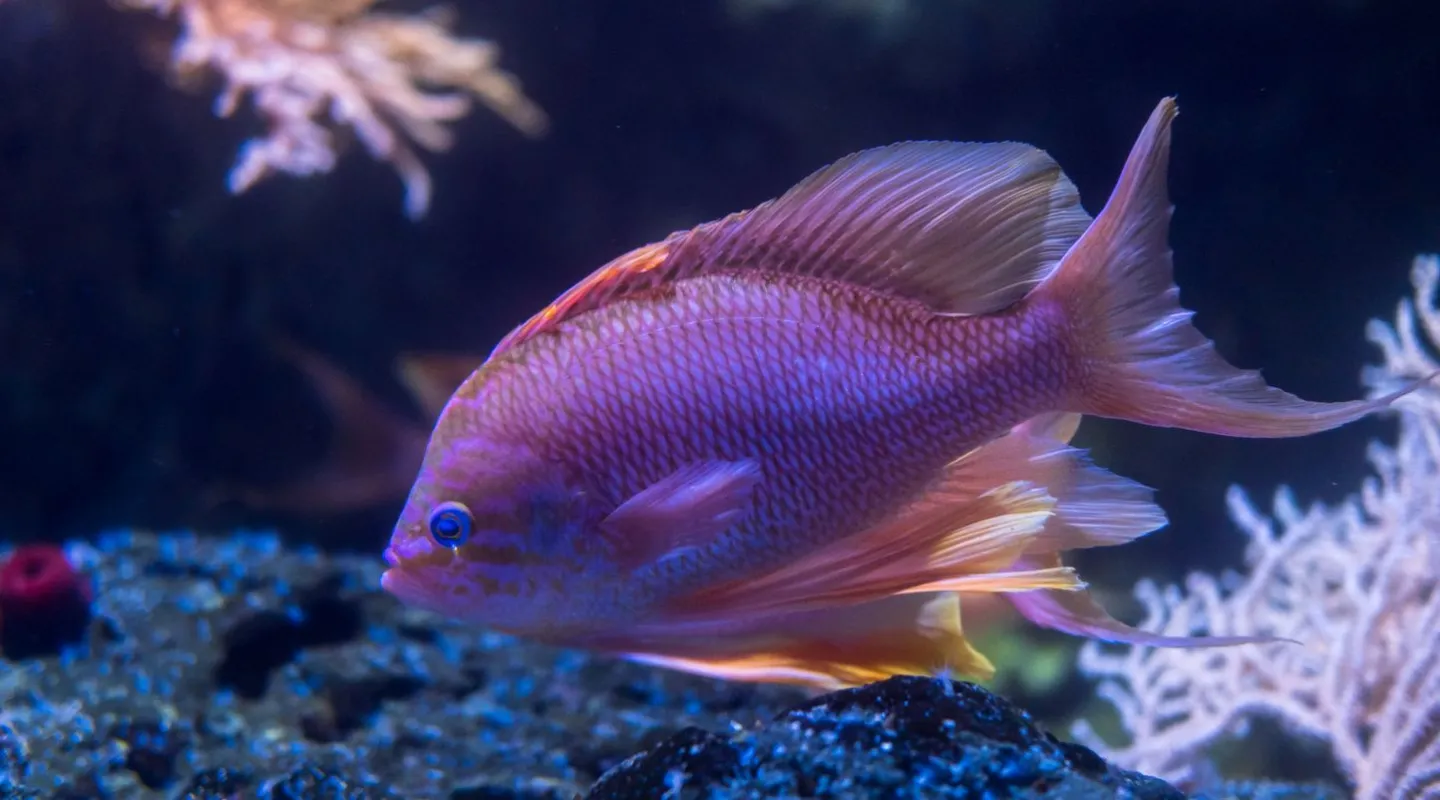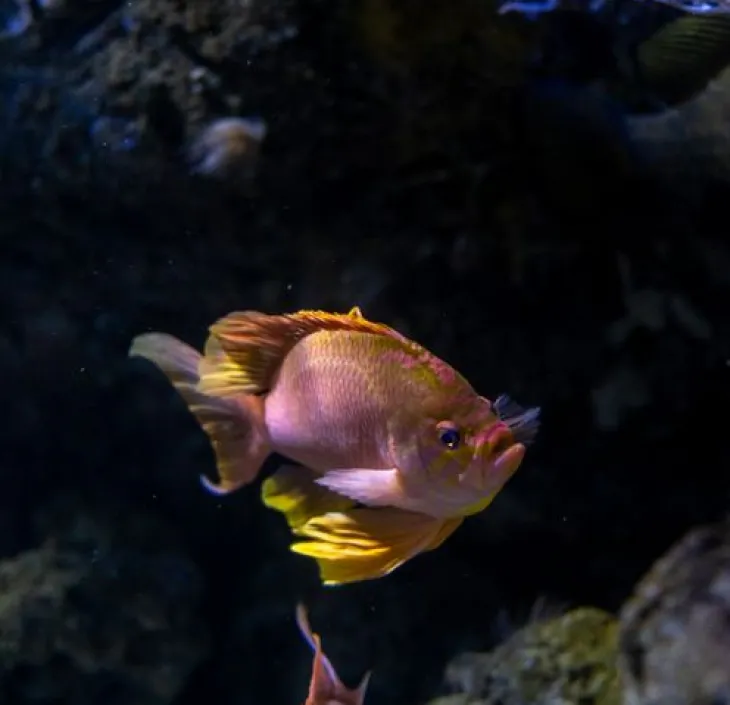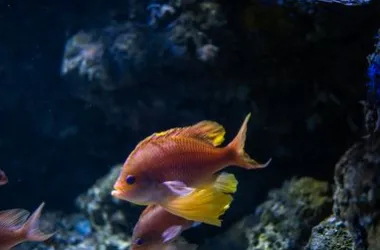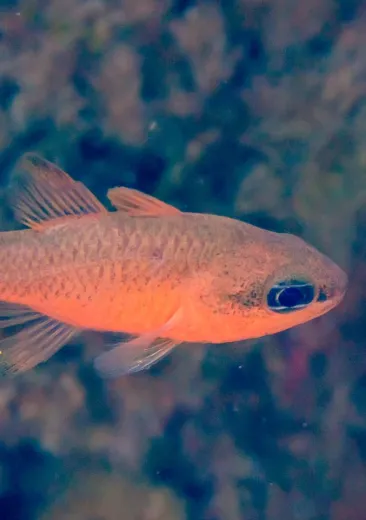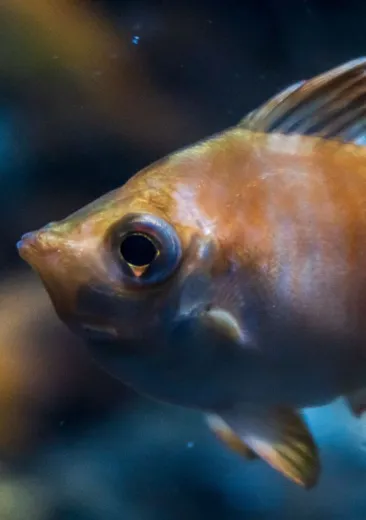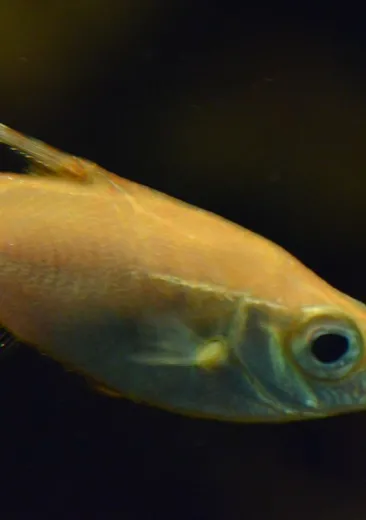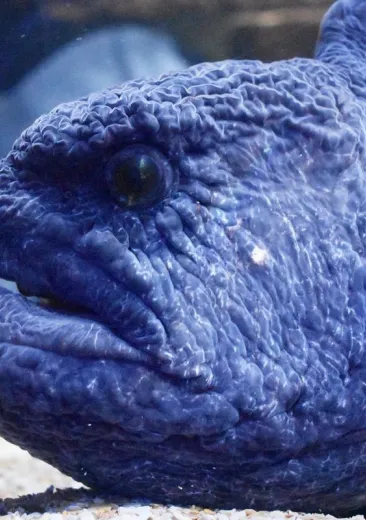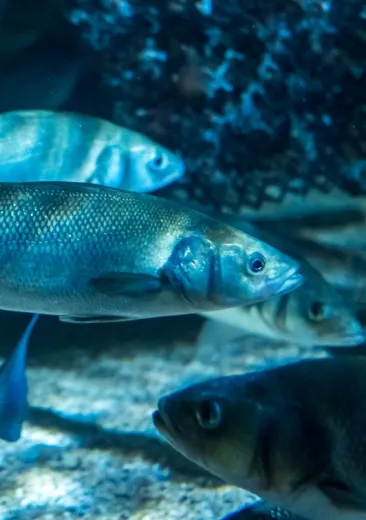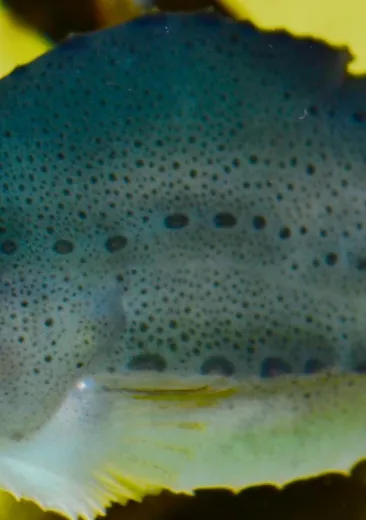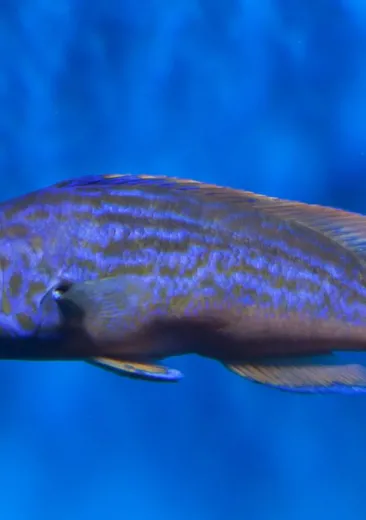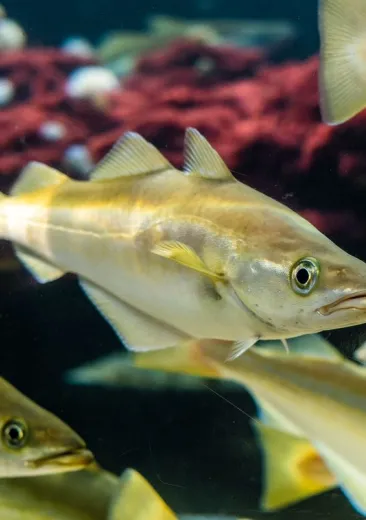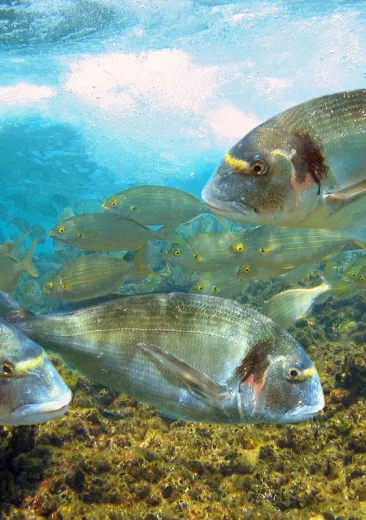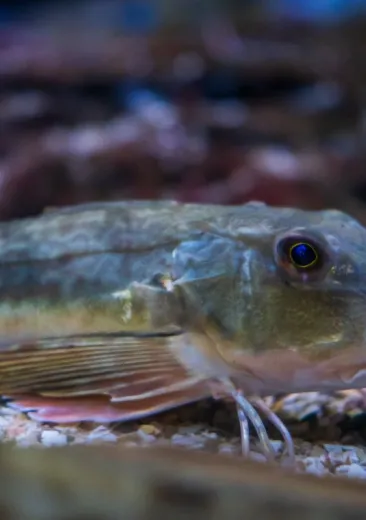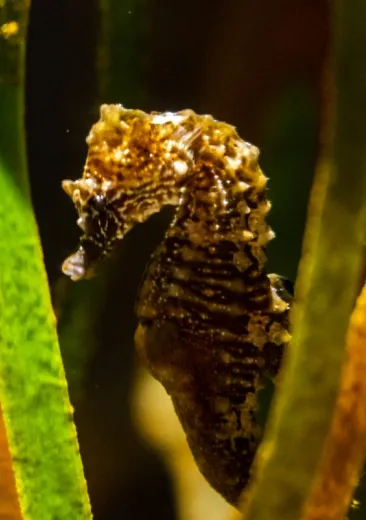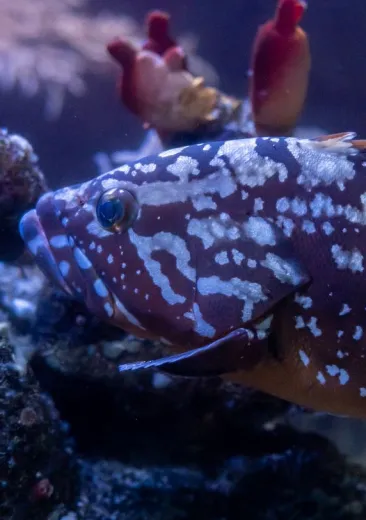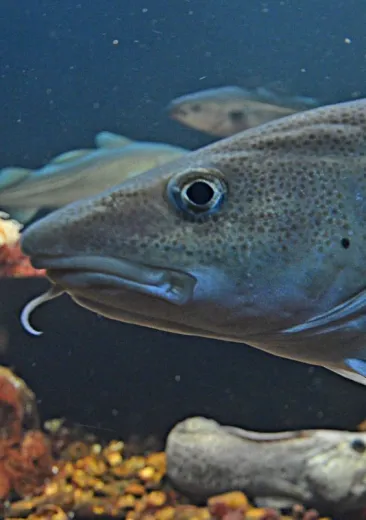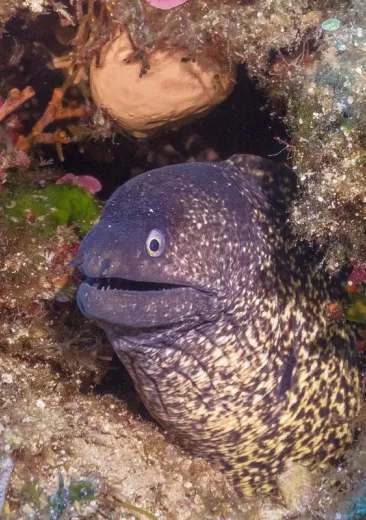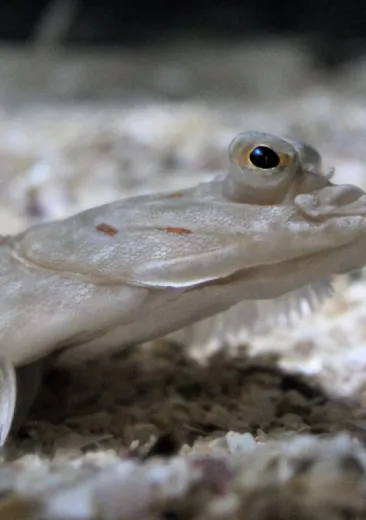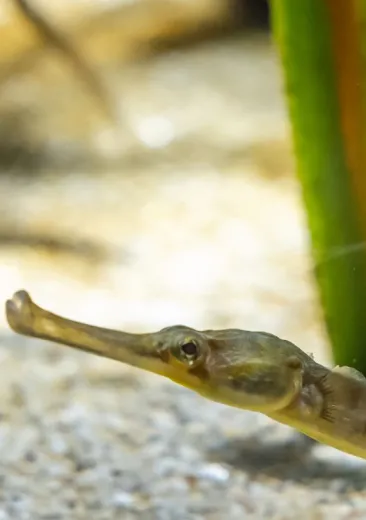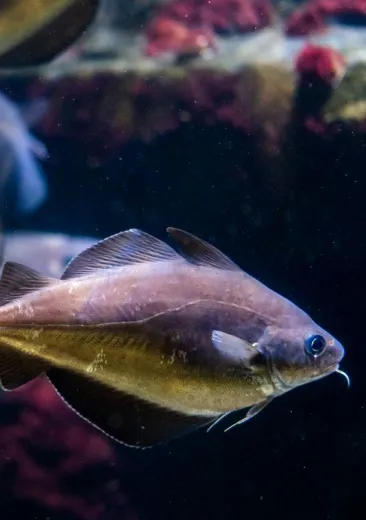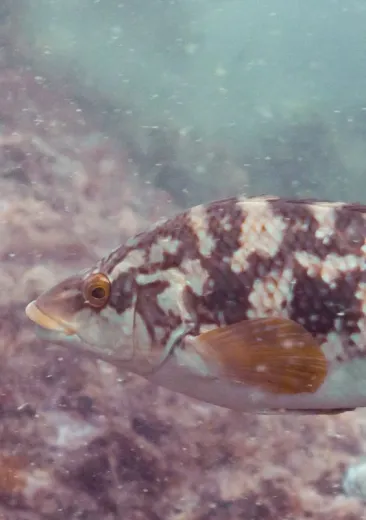This species is hermaphrodite. The swallowtail seaperch is born female and then changes sex to become male. The swallowtail seaperch is carnivorous and feeds on small fish and crustaceans, fish larvae and marine worms.
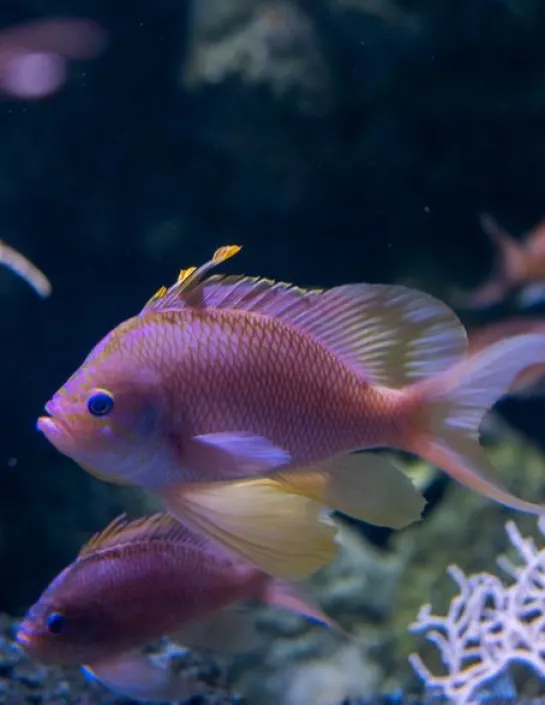
Identity card
Swallowtail Seaperch
- Scientific name:
- anthias anthias
- Family:
- Serranidae
- Class:
- Actinopterygii
- Phylum:
- Chordata
- Year of description:
- Linnaeus, 1758
- IUCN Status:
- Least Concern
- CITES-status:
Not Evaluated
- Distribution:
-
Mediterranean Sea, Eastern Atlantic, English Channel and the North Sea.
- Habitat:
-
Between 15 and 300 metres deep.
- Size:
It can grow up to 25 cm.
- Diet:
-
Fish, crustaceans, fish larvae and marine worms.
